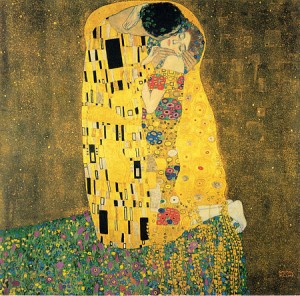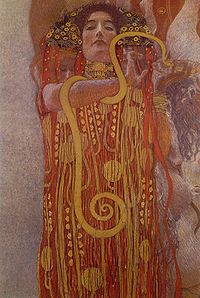“We are seeing the birth of a totally new art,” wrote the architect, Endell, in 1898 in Munich. He was writing about the Vienna Secession formed on May 25, 1897 by nineteen artists and architects protesting the stranglehold that their elders maintained on exhibitions and arts policies. They demanded the right of setting up independent art societies.
The most famous of the founders members was Gustav Klimt who become the first leader of the group. It was under his leadership that the Secessionists proclaimed that they did not recognize any difference between great and minor works of art. To them art belonged to everyone. Most importantly, the Vienna Secession was a bridge between 19th-century Aestheticism and 20th-century Modernism.
Much of the art of Secessionism encompassed decorative style; flatness; ritual sophistication; and suggestiveness as seen in the works below.


This painting, “Hygia”, was commissioned by the University of Vienna to be part of “Medicine” and painted on the ceiling of the “Great Hall”. It was destroyed in May 1945 by the retreating SS forces.
